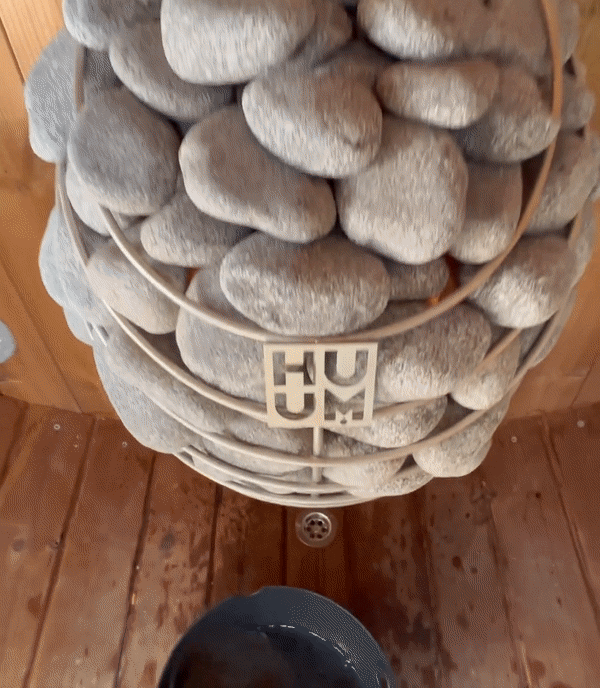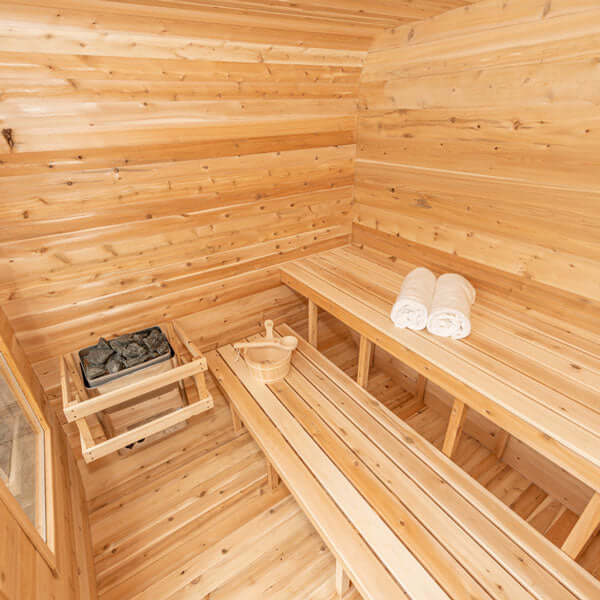The concept of the "Rule of 200" in saunas is a guideline used to ensure the optimal balance between temperature and humidity, providing a comfortable and effective sauna experience. This rule helps sauna enthusiasts maintain the ideal conditions within the sauna, promoting relaxation and health benefits while avoiding potential discomfort or harm.
Understanding the Rule of 200
The "Rule of 200" in a sauna is a fundamental principle that combines temperature (measured in degrees Fahrenheit) and relative humidity (measured as a percentage) to achieve an optimal sauna environment. According to this rule, the sum of the sauna's temperature and the relative humidity should not exceed 200. This balance ensures a comfortable atmosphere that maximizes the therapeutic benefits of a sauna session.
For example, if the sauna temperature is set at 170°F, the relative humidity should be around 30%. Conversely, if the humidity is higher, the temperature should be lowered accordingly. This balance is crucial because excessive heat or humidity can lead to discomfort, dehydration, or even heat-related illnesses.
Importance of Maintaining the Balance
Health Benefits
Maintaining the Rule of 200 is essential for reaping the health benefits of sauna use. A well-balanced sauna environment can aid in:
-
Detoxification: Sweating helps remove toxins from the body.
-
Improved Circulation: The heat promotes blood flow, enhancing cardiovascular health.
-
Relaxation: The combination of heat and humidity helps reduce stress and promote relaxation.
Safety Considerations
Adhering to the Rule of 200 is also vital for safety. High temperatures combined with high humidity can be dangerous, leading to overheating and dehydration. By following this rule, sauna users can enjoy a safer and more pleasant experience.
How to Measure and Adjust Sauna Conditions
Temperature Control
Most modern saunas are equipped with thermostats that allow precise control of the temperature. It is advisable to start at a lower temperature and gradually increase it to find your comfort zone. Monitoring the temperature regularly ensures it stays within the recommended range.

Humidity Control
Humidity in a sauna can be controlled by adjusting the amount of water poured over the heated stones. Adding water increases humidity, while opening vents or using less water decreases it. Using a hygrometer to measure humidity levels can help maintain the desired balance.

Different Types of Saunas and Their Settings
Traditional Finnish Saunas
Traditional Finnish saunas typically operate at higher temperatures (between 150°F and 230°F) with lower humidity levels. Following the Rule of 200, if the temperature is at the higher end, the humidity should be relatively low.

Infrared Saunas
Infrared saunas use infrared heaters to emit radiant heat. These saunas generally operate at lower temperatures (120°F to 150°F) with minimal humidity. The Rule of 200 still applies, ensuring a comfortable and effective experience.

Steam Saunas
Steam saunas, or steam rooms, maintain high humidity levels (up to 100%) with lower temperatures (110°F to 120°F). The high humidity compensates for the lower temperature, keeping the overall balance within the Rule of 200.
The Rule of 200 and Its Impact on Sauna Experience
Enhancing Comfort
By adhering to the Rule of 200, sauna users can achieve a comfortable environment that promotes prolonged use without discomfort. This balance helps prevent overheating and dehydration, allowing for a more enjoyable experience.
Maximizing Benefits
A well-balanced sauna environment enhances the therapeutic effects, such as muscle relaxation, improved skin health, and stress reduction. The Rule of 200 ensures these benefits are maximized without compromising safety.
FAQs
What happens if the Rule of 200 is not followed in a sauna? Ignoring the Rule of 200 can lead to an uncomfortable or even dangerous sauna experience. Excessive heat combined with high humidity can cause overheating, dehydration, and heat-related illnesses.
Can the Rule of 200 be applied to all types of saunas? Yes, the Rule of 200 can be adapted to various types of saunas, including traditional Finnish saunas, infrared saunas, and steam saunas, by adjusting the temperature and humidity levels accordingly.
How can I measure the humidity in my sauna? A hygrometer is a useful tool for measuring the humidity levels in a sauna. This device helps monitor and adjust the humidity to maintain the optimal balance as per the Rule of 200.
Is it safe to pour water over the sauna stones to increase humidity? Yes, it is safe to pour water over the heated stones in a sauna to increase humidity. However, it's important to do so gradually and monitor the humidity levels to avoid exceeding the Rule of 200.
What is the ideal temperature for a sauna session? The ideal temperature for a sauna session varies depending on personal preference and the type of sauna. Generally, temperatures between 150°F and 190°F are common for traditional saunas, while infrared saunas operate at lower temperatures (120°F to 150°F).
How long should a typical sauna session last? A typical sauna session lasts between 15 to 30 minutes. It's important to listen to your body and leave the sauna if you feel uncomfortable, dizzy, or overheated.
Conclusion
The Rule of 200 is a valuable guideline for maintaining the optimal balance between temperature and humidity in a sauna. By following this rule, sauna enthusiasts can ensure a comfortable, safe, and effective experience that maximizes the health benefits of sauna use. Whether using a traditional Finnish sauna, an infrared sauna, or a steam sauna, understanding and applying the Rule of 200 can significantly enhance the overall enjoyment and effectiveness of your sauna sessions.








Leave a comment